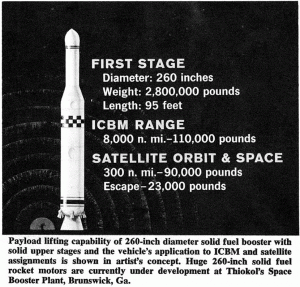InsideDefense Newsstand
ARCIC chief highlights combat, tactical vehicles as key modernization priorities
September 27, 2016
The Army must prioritize "close combat overmatch" and ground vehicles in its modernization efforts, according to the director of the Army Capabilities Integration Center, housed within Training and Doctrine Command.
The service has to address a "bow wave of Army modernization" while operating in an environment of budget constraints, Lt. Gen. H.R. McMaster told reporters in a Sept. 27 roundtable. "Our instinct will be to spread less and less money over the same amount of programs, and we’ll get less and less for our defense dollar," he said.
To avoid this fate, "We have to really try to prioritize as best we can within these areas, which is what we’re endeavoring to do," he continued. "It's hard, though, and I think that risk is increasing."
Identifying his areas of greatest concern, McMaster said, "I think we've got to do more to assure our command and control and mission command capabilities, but we really are behind, as I mentioned, in some critical areas like combat vehicles."
"Sometimes people say, 'Wow, you know that Army capability is kind of expensive, like counter defilade capability like the XM25.' But expensive compared to what, like a nuclear submarine? And then if you think about where the fight is fairest, and where we take the most casualties, and where American servicemen and women are at greatest risk, it's in close combat. And so if you look at where we've invested, we've invested in, really, everything but close combat for a long time."
"So if you asked me where we ought to prioritize, I think it's in the area of close combat overmatch." He characterized this as "an area that I'm really most concerned about, because we've been on this modernization pause for a while."
He explained that ARCIC is "starting with the soldier and with the forward-most unit, or the unit that's in close contact with the enemy, as our main focus." He noted that the emphasis on close combat marks a shift from past efforts.
During the 1990s, for example, he said the Army was "very much captured by the idea of the Revolution in Military Affairs, dominant battlespace knowledge, and we were designing information networks and command posts -- which is all super-important work, and it's a big area of emphasis for us. But we are starting with close combat."
A guiding principle of current efforts is that "all domains are contested," McMaster explained. "Another thing that's changed is that our enemies are moving into complex terrain and they're evading our long-range detection capabilities. And the combination of those two things -- the difficulty of targeting the enemy with long-range precision fires and the enemy's elusiveness -- means we're going to fight in close combat. We're going to have to close with and destroy the enemy."
In order to provide this overmatch, the Army has to provide its "infantry and small units the mobility, protection and lethality they need," he said.
The three-star outlined an approach to capabilities development that focuses on functional concepts, noting that an increasing anti-access/area-denial threat means "the future force requires the capability to deploy rapidly into unexpected locations and transition quickly into operations." While the Ground Mobility Vehicle is intended to address the expeditionary maneuver capability gap for infantry brigade combat teams for "early and forcible entry operations," its lack of armor could render it "vulnerable" on approach.
This issue can be addressed by sending forward the Light Reconnaissance Vehicle, he said, which "allows us to employ appropriate combinations of mounted and dismounted reconnaissance, make contact under favorable conditions with the enemy, ease the forward movement of those infantry, and prevent direct and indirect fire, and so forth." Army leaders have previously said the Joint Light Tactical Vehicle will serve as the LRV "for the foreseeable future."
Through wargaming and experiments, the Army identified another potential threat that required a vehicle solution: "Our infantry in close contact were often fixed by heavy machine gun fire and then had to apply fires," McMaster said. "That sounds like World War I -- we don't want that." Consequently, leaders envision using Mobile Protected Firepower as "a light tank, essentially, that can ensure freedom of movement and action for infantry and close contact."
Finally, he said, "in the context of these operations, all of these vehicles have to have reduced logistics demand" to facilitate sustainment in theater.
According to McMaster, "the functional concepts are undergoing final review" due to recognition that these "weren't as integrated as we wanted them to be." The movement and maneuver concept is currently being rewritten under the supervision of Maj. Gen. Eric Wesley. Once complete, it will serve as "the keystone of the functional concepts" to guide revision "between now and January."
A forthcoming conference involving the Army's centers of excellence will serve "to line up those required capabilities and map them to warfighting challenges." The effort is intended to eliminate redundancies and help leaders develop and refine "a tight set of those required capabilities," McMaster said.
The general also addressed the Army's Abrams and Bradley fleets. "This is one of the first times -- the only time, maybe -- since World War I when the Army has not had a combat vehicle under development," he said. "And we're getting behind in this area. You can only hang so much stuff on our existing tanks and Bradleys before they're overburdened -- and they're already overburdened. And if we don't do something soon in combat vehicles, the vehicles we have are going to be overmatched by potential enemies. And there are a whole bunch of new technologies that can be integrated into combat vehicles now. So we really want to emphasize combat vehicle development."
In addition to upgrading the materiel employed by IBCTs, "We really need to work on our armored brigade combat team capabilities," he said. "Future Fighting Vehicle, we want to get into prototyping faster, so we can integrate these new technologies under innovative engineering concepts and then begin work on a replacement for the Abrams tank."



